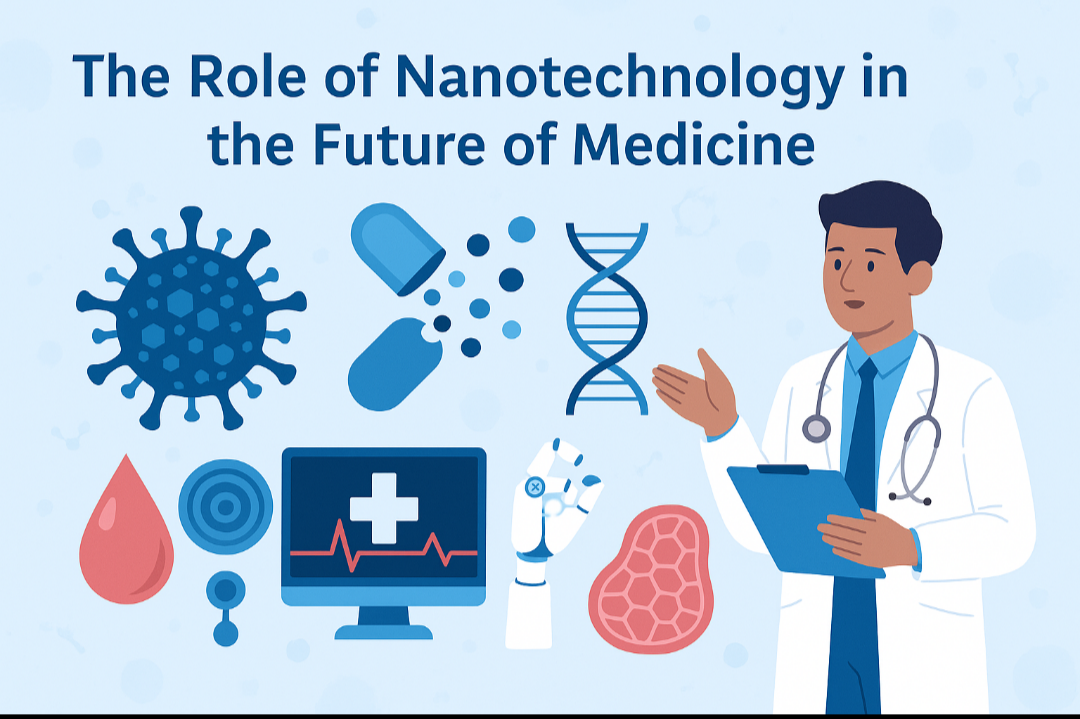
The Role of Nanotechnology in the Future of Medicine (2025–2035)
The Role of Nanotechnology in the Future of Medicine (2025–2035)
1. Introduction: The Convergence of Nanotech and Healthcare
Nanotechnology, the manipulation of matter at the atomic and molecular scale, is poised to revolutionize the field of medicine in the coming decade. As advancements in engineering, biology, and materials science continue to intersect, healthcare systems across the globe are preparing to adopt nanotech solutions that offer greater precision, lower side effects, and personalized approaches to treatment. By 2035, it is expected that nanotechnology will be integrated into mainstream diagnostics, therapeutics, and even preventive care.
2. Precision Drug Delivery Systems
One of the most promising applications of nanotechnology in medicine is targeted drug delivery. Nanocarriers such as liposomes, dendrimers, and polymeric nanoparticles can transport medications directly to diseased cells while minimizing exposure to healthy tissues. This is particularly impactful in cancer treatment, where systemic chemotherapy often causes widespread damage. Companies like BioNTech and Moderna are exploring lipid nanoparticle (LNP) platforms for not only vaccines but also RNA-based therapies.
3. Early Detection and Nano-Diagnostics
Nanotechnology enables the development of highly sensitive diagnostic tools capable of detecting diseases at the molecular level — even before symptoms appear. Quantum dots, gold nanoparticles, and magnetic nanobeads are being integrated into biosensors and lab-on-a-chip systems for rapid testing. Such technologies are expected to become critical in diagnosing cancer, infectious diseases, and genetic conditions. The National Institutes of Health (NIH) continues to fund nano-diagnostic research through initiatives like the Alliance for Nanotechnology in Cancer.
4. Regenerative Medicine and Tissue Engineering
Nanomaterials are also driving innovation in regenerative medicine. Nanoscale scaffolds can mimic the extracellular matrix of human tissues, supporting the growth of new cells and accelerating tissue repair. Researchers are now able to engineer organs-on-chips that simulate the behavior of real human organs, allowing for advanced drug testing and even personalized therapies. As 3D bioprinting and stem cell technology advance, nanotechnology will play a key role in tissue regeneration and transplantation.
5. Nanorobots and Future Therapies
Looking ahead, nanorobots — microscopic machines designed to perform tasks within the human body — could become a reality. These devices may one day be used to clean arterial plaque, destroy cancer cells, or even perform micro-surgeries. While this is still largely in the experimental phase, progress in nanosensors and smart materials points toward a future where real-time, autonomous treatment is possible. The Nanowerk database tracks such cutting-edge innovations in medical nanotech.
6. Ethical and Regulatory Challenges
Despite its immense promise, the integration of nanotechnology into healthcare raises important ethical and regulatory questions. Issues around long-term toxicity, data privacy in nano-monitoring devices, and equitable access must be addressed. Regulatory bodies like the U.S. Food and Drug Administration (FDA) and the European Medicines Agency (EMA) are developing guidelines to ensure safety while fostering innovation.
7. Conclusion: A New Era of Medicine
From revolutionizing drug delivery and diagnostics to enabling regenerative treatments, nanotechnology is set to redefine the landscape of modern medicine. As research accelerates and real-world applications grow, the years 2025 to 2035 may mark the transition from reactive to proactive, personalized, and highly efficient medical care. Strategic investments, international collaboration, and robust oversight will be critical to realizing the full potential of nanotech in medicine.